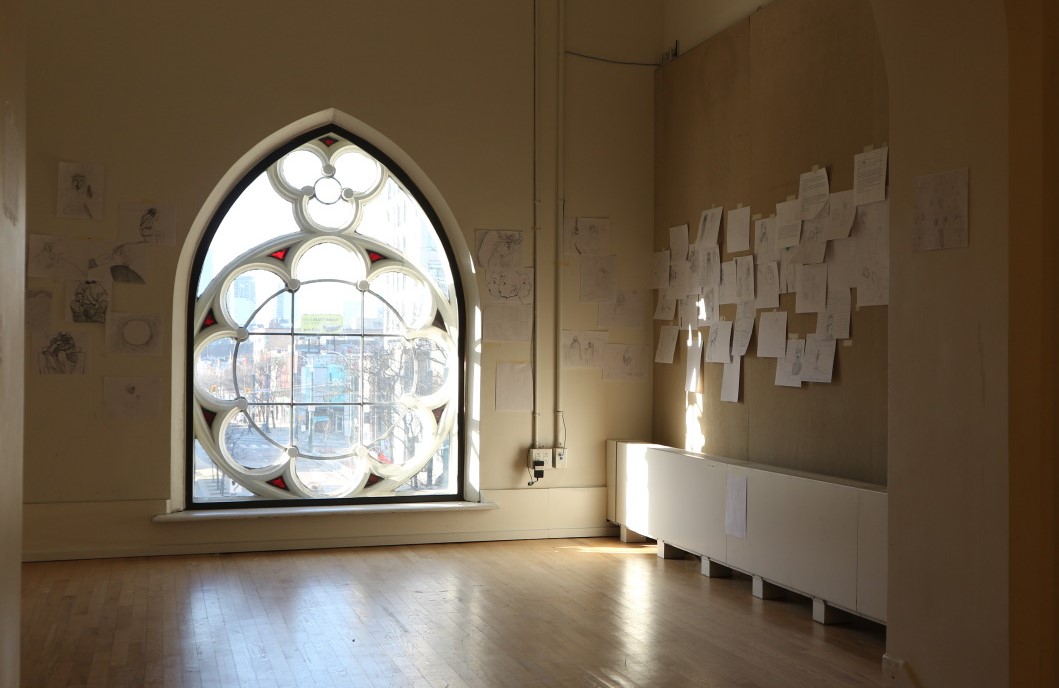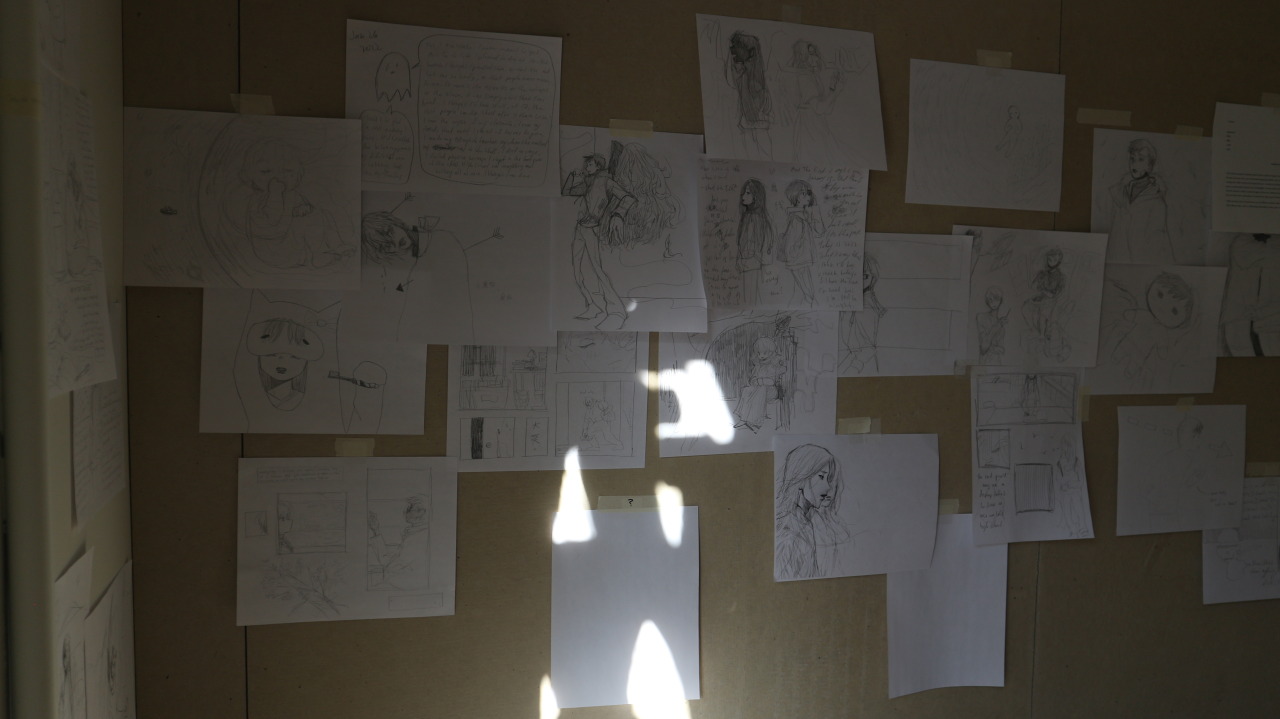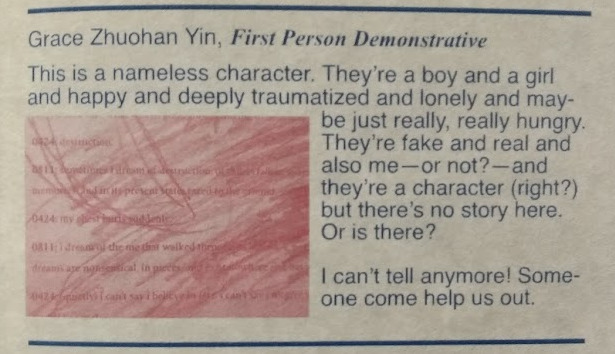



first person demonstrative, Visual Studies Specialist Thesis Project, 2022.
What makes a character believable? What makes them realistic, or more than simply a
two-dimensional stock character? If we take away the narrative they exist for, the storyline they
live in, everything that gives them meaning—how do we recognize them?
Often, the stories I tell feature helpless protagonists that repeatedly suffer and ultimately
succumb to fate—sometimes they are even absent from the main narrative. The story and the
conflicts happen to the character and they are unable to make choices. Although this makes for a
story where readers can easily substitute themselves into, eventually I grew frustrated with the
lack of agency. My dissatisfaction with reality, my disillusionment regarding the art world, my
frustration with being spoken over: they were all bleeding into my work negatively. This time, I
decided I would make something solely about the protagonist.
Through a large quantity of simple drawings, I explore the wishes, wants, and observations of the
nameless protagonist. They exist through the pictures, thinking through the drawing process; the
sheer number of drawings reflect the many facets of the character. Each drawing is made on
standard letter size printer paper, and mainly created with pencil, with some written and typed
text. The subject of the drawings vary from diary-like expositions to illustrations and sketches, all
pointing towards a larger entity. Yet even with this quantity of drawings, it seems difficult to grasp
who this person really is. How much is truthful? What is contrived, and what is real? Do they
actually exist, in their world or ours? How dead is the author? Does it really matter?
The autofictive framing still exists: whether this character stands in for me and my public persona,
or as a metaphorical inner voice is unknown. Autofiction, traditionally referring to a fictional
autobiography, provides another layer of distortion to my protagonist’s origin. Without a fictional
narrative, though, the line between the character and the creator becomes even blurrier. The
plethora of drawings appear nonsensical; the papers muddling into a crime scene of character
traits and lies (truths?) that tell you both everything and nothing at all.
